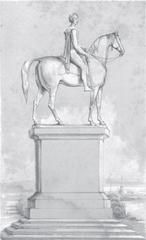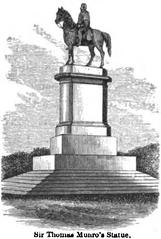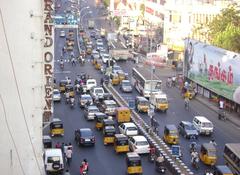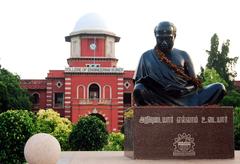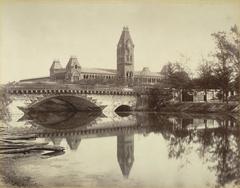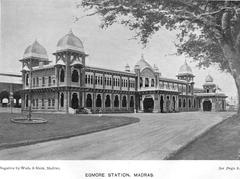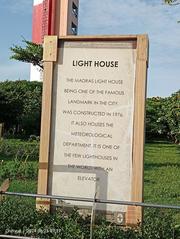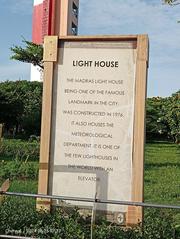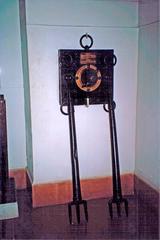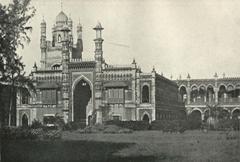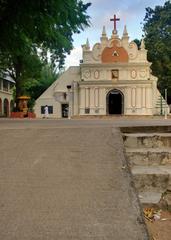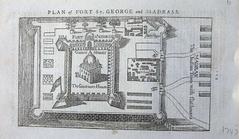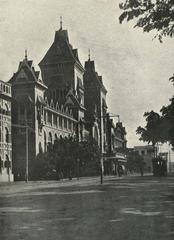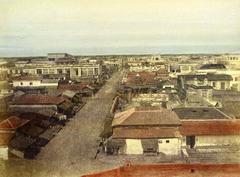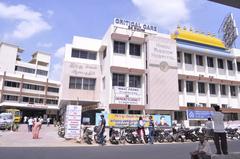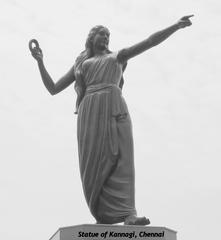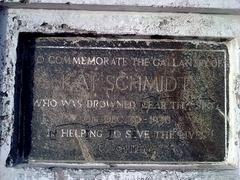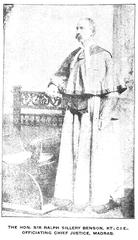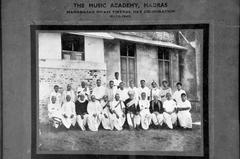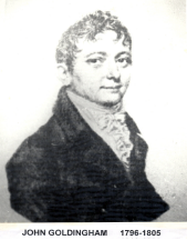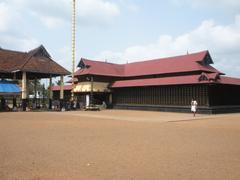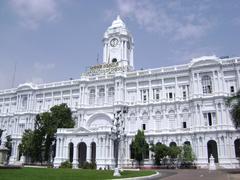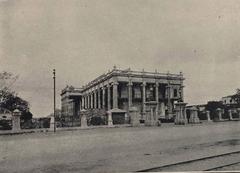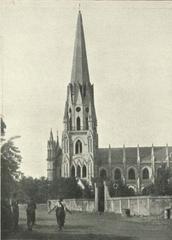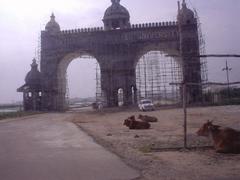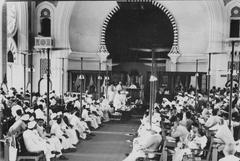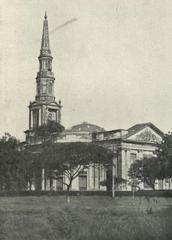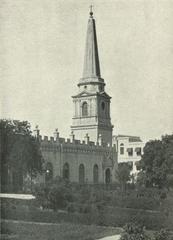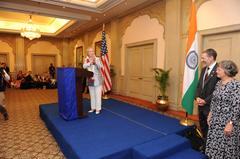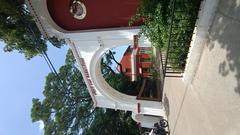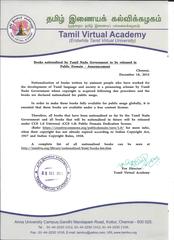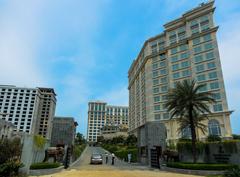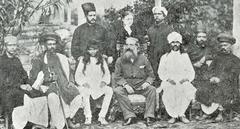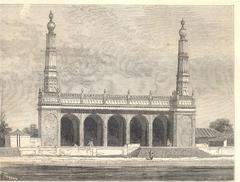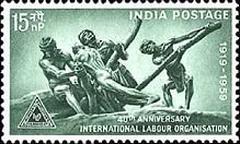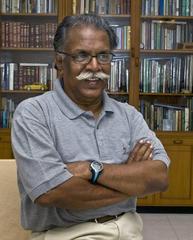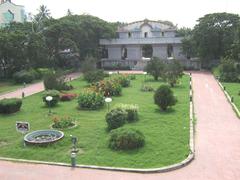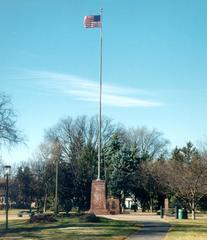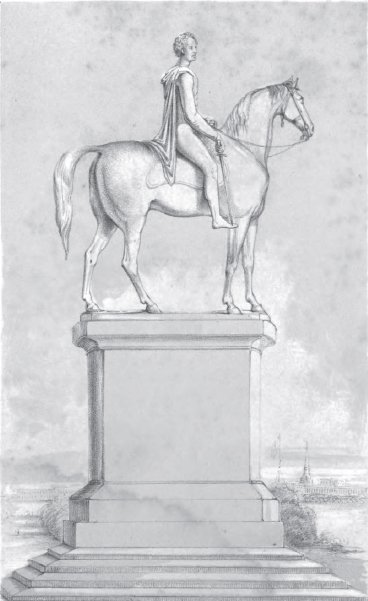
Equestrian Statue of Thomas Munro, Chennai: Visiting Hours, Tickets, and Historical Significance
Date: 14/06/2025
Introduction
The Equestrian Statue of Thomas Munro stands prominently on Anna Salai (Mount Road) and at the Island Grounds in Chennai, India. This iconic bronze monument, unveiled in 1839, is not only a significant work of public art but also a powerful emblem of the city’s colonial legacy. Dedicated to Major-General Sir Thomas Munro, 1st Baronet—a renowned Scottish soldier and reformist Governor of Madras—the statue reflects both the administrative reforms introduced during British rule and the artistic endeavors of the era. Crafted by the celebrated British sculptor Sir Francis Chantrey, the statue is especially notable for depicting Munro riding without stirrups, earning it the local moniker “The Stirrupless Majesty” (DT Next, The Hindu, Indian Columbus).
This guide provides detailed information on visiting the statue, its historical and artistic features, travel tips, accessibility, and recommendations for exploring related colonial-era landmarks in Chennai.
Table of Contents
- Overview and Location
- Historical Background
- Artistic Features and Symbolism
- Visiting Information
- Nearby Attractions
- Special Events and Tours
- Cultural Significance and Legacy
- Conservation and Public Engagement
- FAQs
- Visuals and Media Suggestions
- Summary and Final Recommendations
- References
Overview and Location
The Equestrian Statue of Thomas Munro is located at the junction of Anna Salai and the Island Grounds—one of Chennai’s busiest crossroads and an urban hub of historical significance. The statue is easily spotted due to its elevated granite pedestal and central placement. It is conveniently close to major transportation hubs, such as the Chennai Central Railway Station (about 500 meters away), and is surrounded by other notable landmarks like the Government Museum and Fort St. George (yappe.in).
Historical Background
Commissioned in the late 1830s, the statue was the result of a public subscription campaign in both India and England. It honors Sir Thomas Munro, the Governor of Madras from 1820 to 1827, whose progressive land and administrative reforms—especially the introduction of the ryotwari system—left a lasting impact on southern India (Indian Columbus). Munro’s reputation as a just and effective administrator contributed to the monument’s enduring respect, even post-Independence.
Artistic Features and Symbolism
Sculptor and Artistic Vision
Sir Francis Chantrey, one of Britain’s prominent portrait sculptors, was chosen to execute the monument. The Munro statue is one of only three equestrian works completed by Chantrey, the others being those of George IV and the Duke of Wellington in London (The Hindu, Wikipedia). Chantrey’s assistant, Allan Cunningham, supervised the statue’s installation in Chennai.
Materials and Construction
The statue is cast in bronze, weighing about six tonnes, and was shipped from England in three parts (the figure, the horse, and the granite pedestal). The granite base was constructed locally, and the statue was installed in 1839. The careful design and robust materials have ensured its durability through nearly two centuries of weathering (The Hindu).
Iconography: The Stirrupless Majesty
The statue’s most distinctive feature is Munro’s pose: astride his horse, calm and upright—without saddle or stirrups. This unusual artistic choice has inspired much discussion. Some attribute it to Munro’s reputed preference for bareback riding; others interpret it as a symbol of self-possession and authority (Wikipedia). The horse, modeled after an Arabian, is depicted in a steady, poised stance. Munro’s attire—a British officer’s uniform, sans headgear—has led to the “headless” legend, but was intended to reflect humility and approachability (Madras Musings).
Visiting Information
Hours and Entry
- Open 24/7: The statue is situated in a public traffic island and can be viewed anytime. For the best experience, visit during daylight hours (roughly 6:00 AM–8:00 PM) for safety and optimal visibility (yappe.in).
- No Entry Fee: There is no charge or ticket required to view the monument.
Accessibility
- Wheelchair Access: The area is generally accessible, with paved pathways, though the statue itself is surrounded by fencing on a traffic island.
- Mobility Considerations: Direct approach is restricted; visitors must view the statue from the roadside or nearby pedestrian paths. Be cautious navigating busy roads, especially during peak hours.
Travel Tips
- Public Transport: Easily reachable by bus, metro (Chennai Central Station), and auto-rickshaw. Taxis can drop you close to the site.
- Parking: Limited street parking. Public transport is preferable during busy times.
- Facilities: No restrooms or refreshments at the statue, but amenities are available in the surrounding Anna Salai and Triplicane areas.
- Safety: Exercise caution due to heavy traffic; use pedestrian crossings.
Nearby Attractions
Enhance your visit by exploring several historical and cultural sites nearby:
- Government Museum, Chennai: Extensive collections in art, archaeology, and natural history.
- Fort St. George: The first British fortress in India, offering insights into colonial history.
- Madras High Court: Architectural marvel of Indo-Saracenic style.
- Marina Beach: Popular seaside promenade.
- British War Cemetery and Sri Devi Angalaparameswari Alayam: Additional nearby heritage sites.
Special Events and Tours
The statue is frequently included in Chennai heritage walks and colonial history tours. Local history groups and tourism boards occasionally organize special guided walks that provide in-depth narratives about the statue and surrounding landmarks (The Hindu).
Cultural Significance and Legacy
The Munro statue is more than a colonial relic; it is an enduring symbol of the city’s layered identity. Its survival—unlike many other colonial-era statues—reflects the nuanced legacy of Munro’s administration and the respect he commanded in local memory. The monument continues to inspire artists, writers, and civic discussions about heritage and public memory (Equestrian Statue).
Conservation and Public Engagement
Over the years, the statue has undergone restoration efforts, including a notable facelift in 2019. Civic engagement is ongoing, with debates on contextualizing the statue through interpretive plaques and educational programs to better inform the public about Munro’s role and the complexities of colonial history (The Hindu).
FAQs
Q: What are the visiting hours for the Equestrian Statue of Thomas Munro?
A: The statue is accessible at all times, but daylight visits (6:00 AM–8:00 PM) are recommended.
Q: Is there an entry fee?
A: No, viewing the statue is free.
Q: How do I reach the statue?
A: It is located at the Island Grounds, easily accessible by bus, metro (Chennai Central), taxi, or auto-rickshaw.
Q: Is the statue wheelchair accessible?
A: The surrounding area is generally accessible, but direct approach may be challenging due to fencing and traffic.
Q: Are guided tours available?
A: Yes, the statue is often included in heritage walks and city tours.
Q: What other attractions are nearby?
A: Fort St. George, the Government Museum, Madras High Court, and Marina Beach are all within a short distance.
Visuals and Media Suggestions
Recommended images:
- High-resolution photos of the statue from various angles, highlighting its artistic features.
- Close-ups of the stirrupless design.
- Maps showing the statue’s central location relative to nearby attractions.
- Archival images for historical context.
Alt text example:
“Equestrian Statue of Sir Thomas Munro at Anna Salai, Chennai, viewed during daylight.”
Summary and Final Recommendations
The Equestrian Statue of Thomas Munro is a compelling blend of history, art, and civic identity. Its unique design, rich historical context, and central location make it a must-visit for anyone interested in Chennai’s colonial heritage. To maximize your experience:
- Visit during daylight for the best views and photos.
- Combine your visit with nearby heritage sites.
- Consider joining a guided heritage walk for deeper insight.
- Exercise caution when navigating busy roads near the site.
For more curated heritage experiences and up-to-date information, download the Audiala app and follow us on social media.
References
- Why was Munro’s statue called Stirrupless Majesty? - DT Next
- Madras and Munro: Tales behind the statue - The Hindu
- Munro Statue, Chennai - Indian Columbus
- Sir Thomas Munro Statue, Chennai - Yappe.in
- Munro statue to get a facelift - The Hindu
- Equestrian Statue of Thomas Munro - Equestrian Statue
